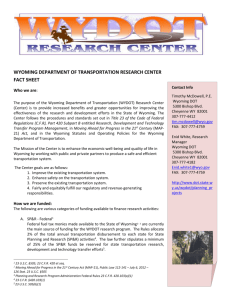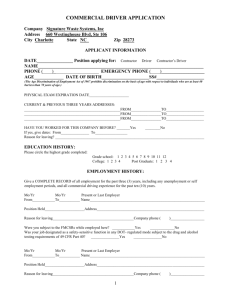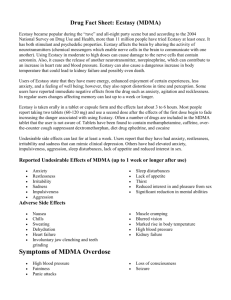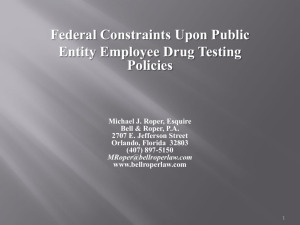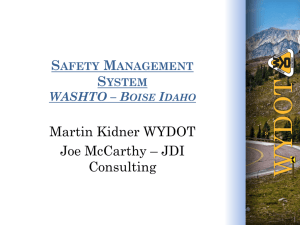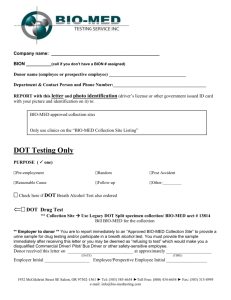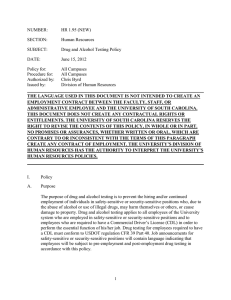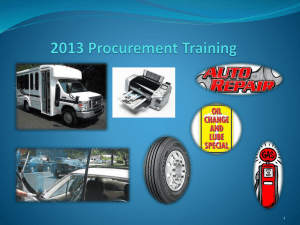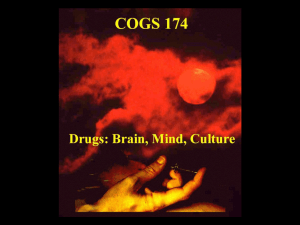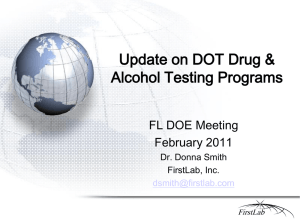Drug and Alcohol - Wyoming Department of Transportation
advertisement
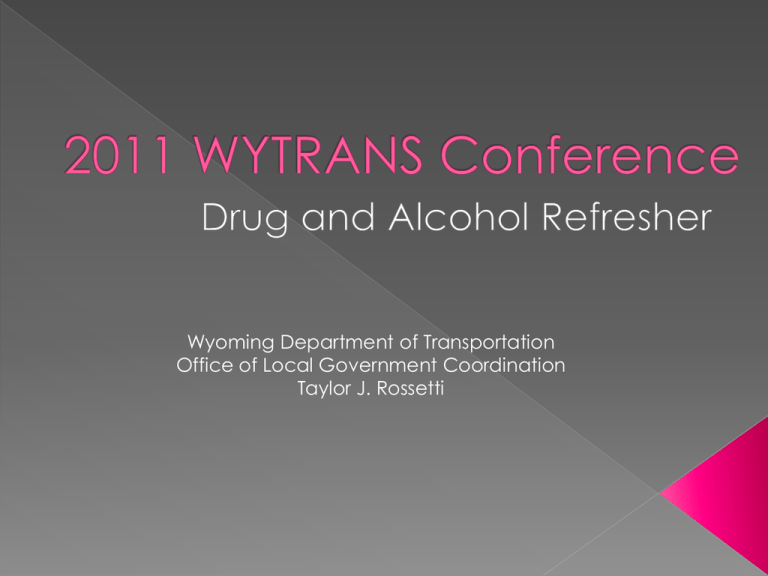
Wyoming Department of Transportation Office of Local Government Coordination Taylor J. Rossetti 49 CFR Part 655 › Prevention of Alcohol Misuse and Prohibited Drug Use in Transit Operations 49 CFR Part 40 › Procedures for Transportation Workplace Drug and Alcohol Testing Programs WYDOT Drug and Alcohol Policy for Transit Providers Statutorily requires testing for recipients of 5307 and 5311 (5309) Random Testing Rates • Drugs - 25% Marijuana, Cocaine, Opiates, Amphetamines, PCP, and Ecstasy • Alcohol – 10% Safety Sensitive Functions • Operate a revenue service vehicle • Operating a non-revenue vehicle that requires a CDL (Tow Truck) • Controlling dispatch of vehicles • Maintaining vehicles (if the maintenance is performed by your employee) • Armed security personnel Any other person on your staff is not covered under this policy Policy Education and Training › All employees must receive a minimum of 60 minutes of training Cover the effects and consequences of use and the signs and symptoms of drug use Recommend an annual refresher › Supervisors and others authorized to make a reasonable suspicion determination must have an additional 60 minutes of training (120 minutes total) Additional information regarding the physical, behavioral, speech and performance indicators of alcohol misuse Testing Program consistent with Part 655 and 49 CFR part 40 Procedure for referring a covered employee to a Substance Abuse Professional Pre-employment testing › No excuses! Drug test must have a verified negative test prior to performing any safety-sensitive function Alcohol may be tested for but not required All employees must be treated equally › Employee out of safety-sensitive function for more then 90 days and not in the random pool Only person authorized and trained for reasonable suspicion can make this determination › Must be based on specific information › Document your reason for sending to test Fatal accident › This is a drug and alcohol test › May extend beyond the driver Dispatcher and maintenance personnel Nonfatal accident › Reasonable suspicion › Person requires medical treatment away from the scene › Vehicle must be towed away Safety-sensitive employees only › May use a C/TPA to administer your pool › Selection should be scientifically valid (random) with each employee receiving an equal chance of being selected › You must ensure that the testing rates are met › May have to report results to WYDOT for inclusion into the annual DAMIS Unannounced and unpredictable Only tested while performing safety-sensitive function, just before or just after duty for alcohol Drug may be tested for anytime the employee is on duty Who is responsible for what • Employer Must be familiar with this part in its entirety Agents working on your behave o You are required to have documentation showing they are qualified to conduct the function o Periodic review of collection sites DOT vs. non-DOT testing o Must be completely separate from each other – different forms Previous employer o After receiving consent, must request information from a previous employer if they are regulated by a DOT Agency o Ask the employee if they have every had a positive test Could still hire employee if they completed the return to duty process Brings DOT in line with Health and Human Services procedures › Impact on collection sites Laboratory impacts › Addition of Ecstasy (MDMA) to the testing Protocol › Adjustments to cutoff levels for cocaine and amphetamines › Mandatory initial testing for heroin Medical Review Officer › Changes to training/certification Policy developed through periodic FTA audits CATC WYDOT – 2007 WYDOT – 2010 Addition of MDMA – Ecstasy to the drug protocol If your policy mentions parts 653 and 654, it is out of date
